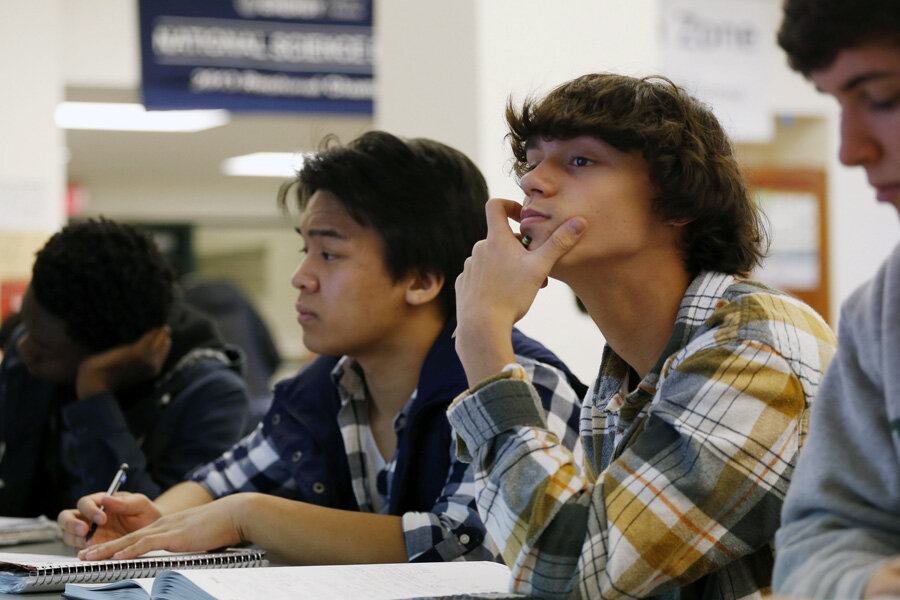Attention teens: Later school start time gets thumbs up from big organization
Loading...
Joining a growing movement of parents, pediatricians, and educators across the country, the American Academy of Pediatrics (AAP) on Monday is urging middle and high schools to start their classes later in the morning – at no earlier than 8:30 a.m. – to help teenagers get more sleep.
Referencing scores of studies tying insufficient sleep in adolescents to academic, health, and public-safety concerns, the AAP in its new policy recommendation calls sleep deprivation among teens “one of the most common, important, and potentially remediable health risks in children.” School start times, note child-health advocates, have crept earlier in recent decades to the point that some 40 percent of US high schools now start before 8 a.m.
“The research is clear that adolescents who get enough sleep have a reduced risk of being overweight or suffering depression, are less likely to be involved in automobile accidents, and have better grades, higher standardized test scores and an overall better quality of life,” said Dr. Judith Owens, the lead author of the policy statement. “Studies have shown that delaying early school start times is one key factor that can help adolescents get the sleep they need to grow and learn.”
Those who have long pushed for changes in school start times say they hope this recommendation from the widely respected AAP will put new pressure on school districts, many of which have been loath to alter schedules.
“I think this is a turning point statement,” says Terra Ziporyn Snider, co-founder and executive director of the nonprofit group Start School Later. “It’s not only a very high-profile health organization, but it’s also very specific. That truly is a critical step forward.”
Yet changing school schedules is logistically complicated and politically perilous, and it’s been hotly debated across the country. Opponents cite everything from bus-route complexities and parents’ work schedules to cost and the impact on sports practices as reasons to stick with earlier school days.
A number of administrators have even lost their jobs in the fallout over changed start times, Ms. Snider says. But other districts – including Fairfax, Va.; Montgomery County, Md.; and Seattle – are moving in the direction of later school start times.
The AAP’s new recommendation stems from scientific studies of teenagers’ sleep rhythms. According to medical research, teens have decidedly different sleep patterns than either preteens or adults and are typically programmed to go to sleep no earlier than 11 p.m. Also, they need about nine hours of sleep.
But that math simply doesn’t work when adolescents are forced to rise in time to catch a bus for, say, a 7:30 a.m. bell. Indeed, 59 percent of sixth- through eighth-graders and 87 percent of high-schoolers get less than 8.5 hours of sleep, the National Sleep Foundation estimates.
As part of her extensive research into teens’ sleep patterns, Kyla Wahlstrom, director of the Center for Applied Research and Educational Improvement at the University of Minnesota, found that when the school start time is pushed later, teens still go to bed at the same time. Evaluating data from more than 9,000 students attending eight high schools in three states, she also found that attendance, standardized test scores, and academic performance increased, while tardiness, substance abuse, and symptoms of depression decreased.
At the Jackson Hole High School in Wyoming, the number of car crashes involving teen drivers dropped 70 percent after the school shifted to an 8:55 a.m. start.
“These kinds of decisions are hard to make,” Ms. Walshtrom says. “They impact when families go to work, how they arrange day care. The decisions shouldn’t be made quickly, and they should be made thoroughly.... There are just huge health implications.”








